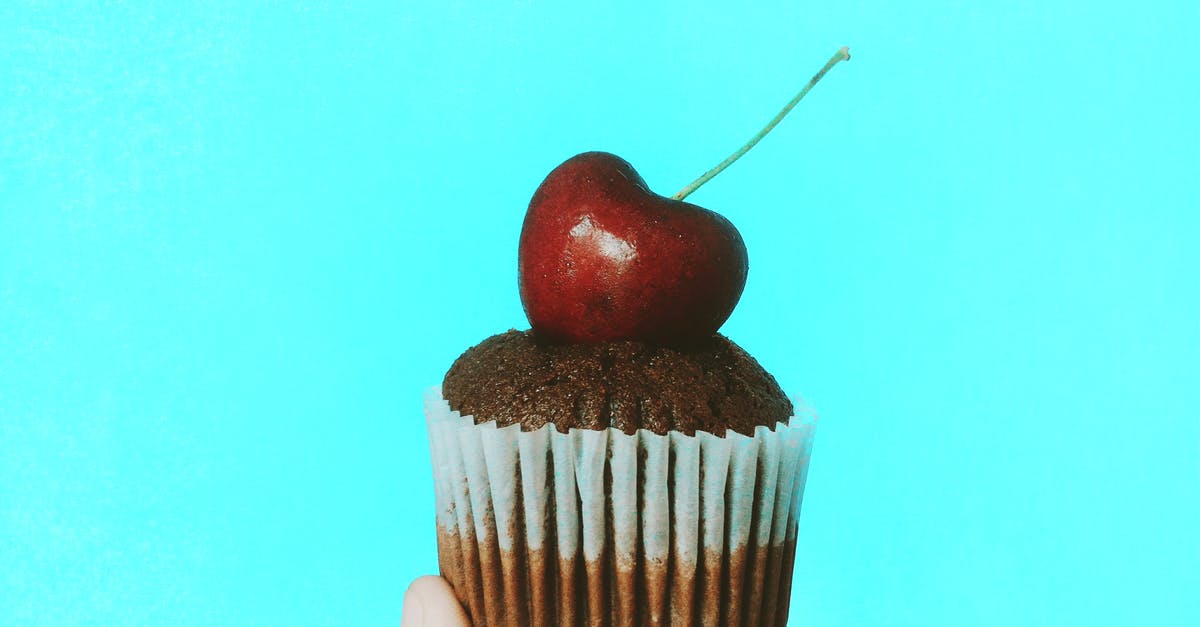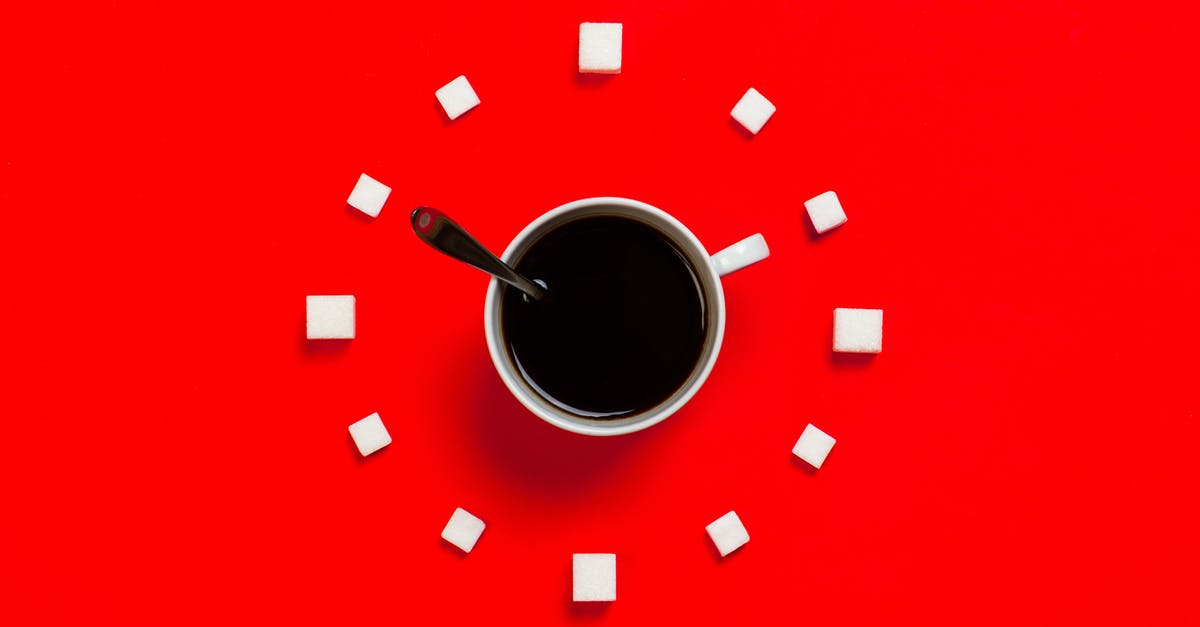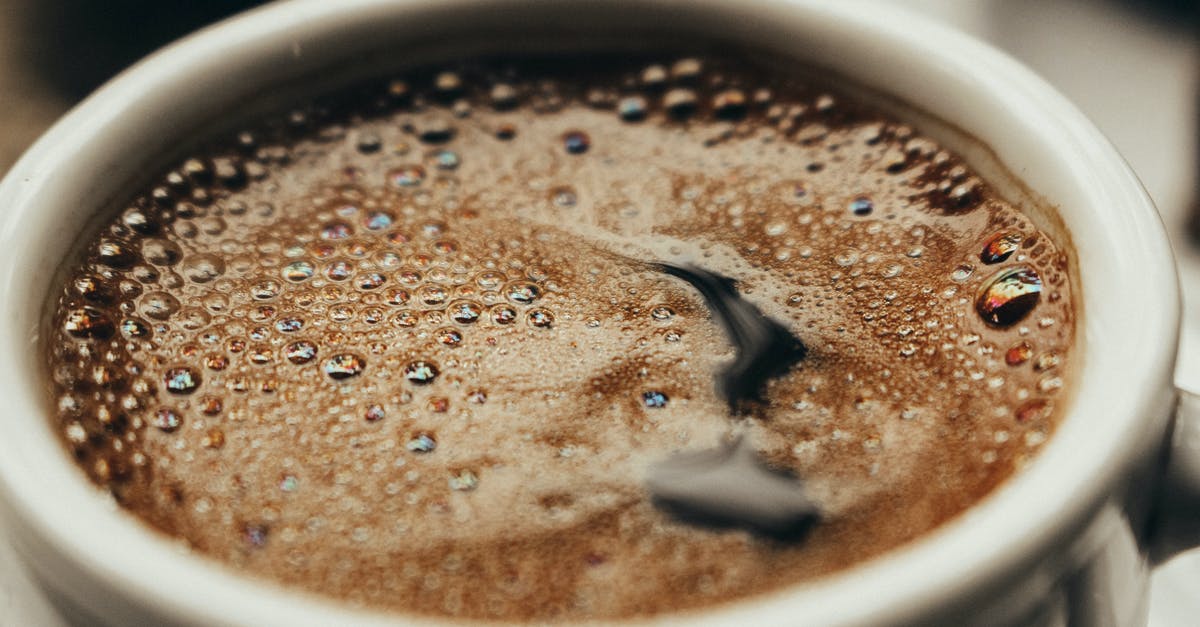Sugar forming tiny bubbles in microwaved coffee?

When I heat up coffee in the microwave and then pour in sugar, a layer of tiny dense bubbles forms at the top of the glass and stays there for the duration of the drinking, diminishing slightly over time. When I prepare the coffee by other means of heating this does not happen. What causes those tiny bubbles?
Best Answer
Upon addition of sugar to the superheated coffee, the formation of bubbles (phase transformation) occurs because the fine particles of sugar provide sites for the heterogeneous nucleation of gas from the liquid.
When the introduction of a fine inoculant (such as sugar particles) results in sudden fizzing of a liquid, it is an indication that there has been minor superheating of that substance.
Superheating tends to occur more in microwaves than on stovetops because people use metal saucepans/kettles on the stove, while generally using glass or glazed ceramic containers when heating a volume of water in a microwave oven.
When water is heated in a glass or glazed ceramic container rather than a metal one, the very hard surface of the container means that there are few scratches on it to act as sites for the heterogeneous nucleation of gas. Fewer heterogeneous nucleation sites means less heat loss through the transformation of liquid to gas.
This university site also makes a good point about the tendency for stovetop heating to cause localised superheating in the vicinity of the container walls... However, I think that this would tend to cause more boiling due to localised heating to the point that homogenous nucleation can occur (with the homogeneously nucleated bubbles then acting as further heterogenous nucleations sites) – not because of stirring of the water.
With regard to why your bubbles remained present for the duration of drinking, I would hypothesise that this perhaps has something to do with the oils in the crema of the coffee, and/or reaction of the dissolved sugar to form something that increases the surface tension of the water. (Not sure what you would call the opposite of a surfactant effect).
A final thing I would like to mention is that (as indicated on the UNSW page), microwaving liquids has the potential to result in violent reaction, or even explosion, of the liquid — in other words, you are risking serious burn injuries by taking a shortcut to heat it up.
Adding a powder (like sugar or instant coffee) to superheated water is particularly bad because in doing so, you are introducing millions of nucleation sites at once. That said, you should also be aware that since gas bubbles themselves promote heterogeneous nucleation, simply placing a spoon in the cup can be enough to cause an 'explosion'.
If you really need to microwave a liquid, (e.g., if you are cooking something), consider heating it in a microwave-safe plastic container that has been washed a few times (and is therefore abraded on the inside). You should also stop the microwave to check the temperature of the liquid at regular intervals, rather than nuking the fluid for an excessively long time.
Pictures about "Sugar forming tiny bubbles in microwaved coffee?"



Quick Answer about "Sugar forming tiny bubbles in microwaved coffee?"
Upon addition of sugar to the superheated coffee, the formation of bubbles (phase transformation) occurs because the fine particles of sugar provide sites for the heterogeneous nucleation of gas from the liquid.What do bubbles in your coffee mean?
coffee bubbles. The bevy of bubbles that greet you in a cup of coffee come from carbon dioxide, which forms and gets trapped in coffee beans as they roast. The beans release the gas over time, but the rate of degassing can speed up when beans are ground and exposed to hot water during brewing.Why did my coffee explode when I added sugar?
By the time the liquid near the edge of the container reaches the boiling point, the liquid in the middle is considerably hotter; it is superheated. The addition of sugar or a tea bag now can spur vigorous boiling.Providing warmth in the winter, quietly hidden in the bubbles of old brown sugar
More answers regarding sugar forming tiny bubbles in microwaved coffee?
Answer 2
It can be water overheat. When you pour in sugar water starts boiling slightly. Maybe you can achieve such result while cooking on a stove.
Such effect also can be seen when you put salt (or sugar) into almost boiling water. It seems that process starts to run strongly.
Sources: Stack Exchange - This article follows the attribution requirements of Stack Exchange and is licensed under CC BY-SA 3.0.
Images: Min An, Stas Knop, Content Pixie, samer daboul
